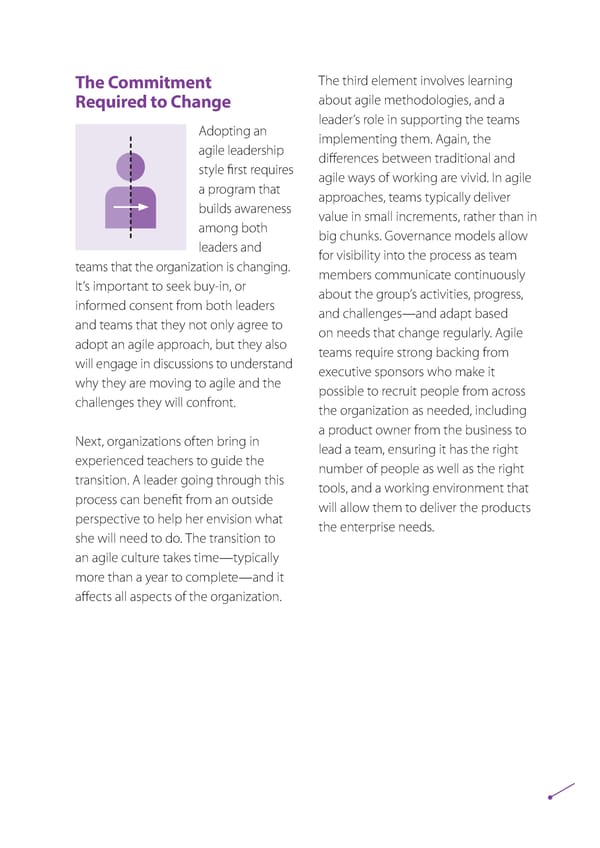The Commitment The third element involves learning Required to Change about agile methodologies, and a Adopting an leader’s role in supporting the teams agile leadership implementing them. Again, the style first requires differences between traditional and a program that agile ways of working are vivid. In agile builds awareness approaches, teams typically deliver among both value in small increments, rather than in leaders and big chunks. Governance models allow teams that the organization is changing. for visibility into the process as team It’s important to seek buy-in, or members communicate continuously informed consent from both leaders about the group’s activities, progress, and teams that they not only agree to and challenges—and adapt based adopt an agile approach, but they also on needs that change regularly. Agile will engage in discussions to understand teams require strong backing from why they are moving to agile and the executive sponsors who make it challenges they will confront. possible to recruit people from across the organization as needed, including Next, organizations often bring in a product owner from the business to experienced teachers to guide the lead a team, ensuring it has the right transition. A leader going through this number of people as well as the right process can benefit from an outside tools, and a working environment that perspective to help her envision what will allow them to deliver the products she will need to do. The transition to the enterprise needs. an agile culture takes time—typically more than a year to complete—and it affects all aspects of the organization.
 Enterprise Agility: Pushing Innovation to the Edge of the Organization Page 15 Page 17
Enterprise Agility: Pushing Innovation to the Edge of the Organization Page 15 Page 17